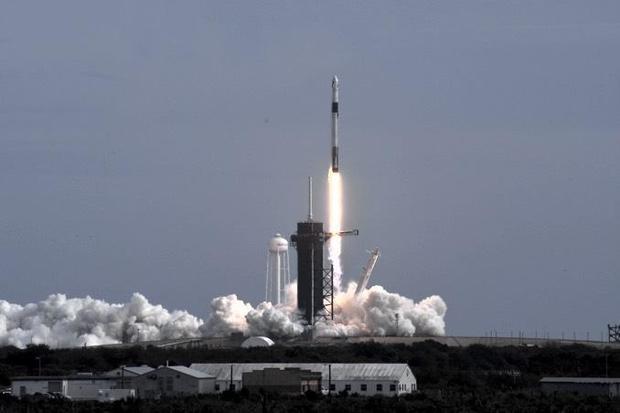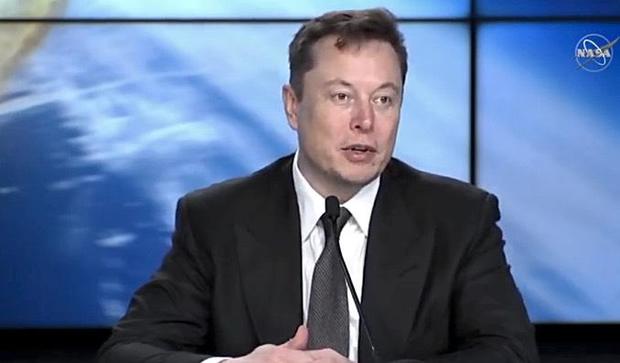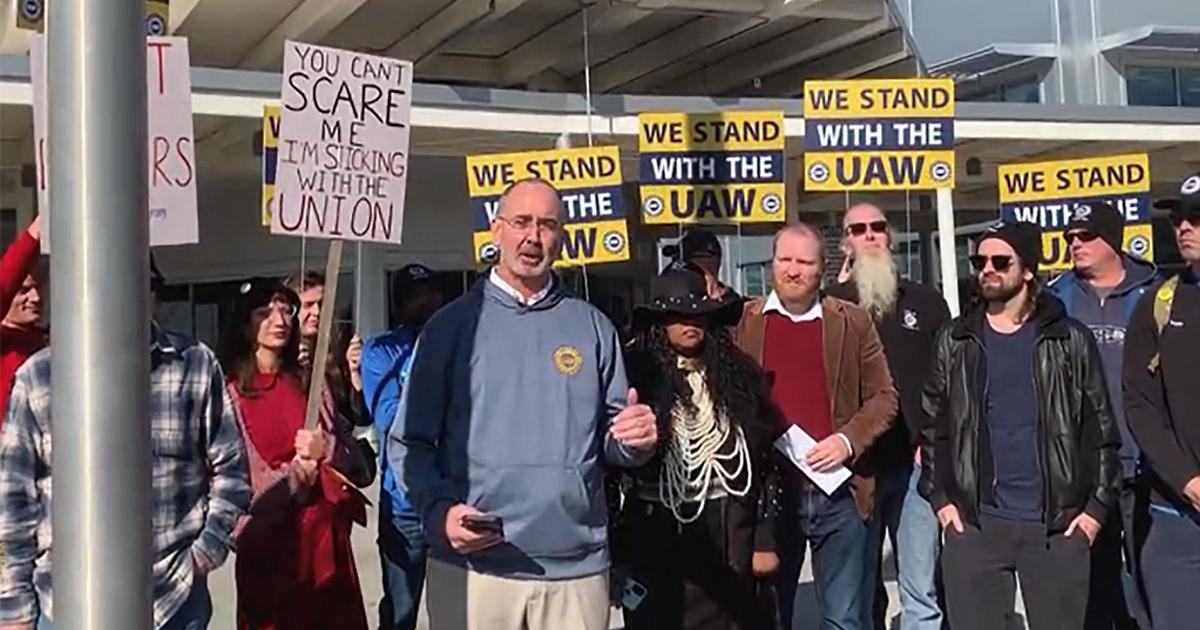SpaceX in-flight abort test sets stage for first piloted Crew Dragon flight
SpaceX deliberately destroyed a Falcon 9 booster Sunday in a spectacular high-altitude conflagration moments after an unpiloted Crew Dragon astronaut ferry ship shot away in a seemingly "picture-perfect" test of its emergency escape system, a major milestone setting the stage for a piloted test flight this spring.
While the Falcon 9 broke up in a spectacular fireball as expected, the Crew Dragon's eight powerful abort engines quickly pushed the spacecraft away with a sudden burst of acceleration that carried it on a ballistic trajectory to an altitude of about 25 miles. It then arced over, plunged back into the thick lower atmosphere and descended to a relatively gentle parachute-assisted splashdown 20 miles east of Cape Canaveral.
While it will take engineers weeks to sift through stored telemetry and carry out a detailed inspection of the spacecraft, SpaceX founder and chief designer Elon Musk told reporters the test appeared to go well and the company should be ready for a piloted test flight within a few months.
"Overall, as far as we can tell thus far it is a picture-perfect mission, it went as well as one could possibly expect," he said. "I'm super fired up, this is great, really great."
NASA Administrator Jim Bridenstine said if the data review confirms first impressions, the agency will be a major step closer to launching American astronauts on American rockets from U.S. soil for the first time since the last space shuttle flight in 2011.
"Make no mistake, there's a lot left to do," he cautioned. "We have a number of parachute tests upcoming and, of course, we're going to get a lot of data from this particular test. So we're not quite there yet, but by all accounts, this was a very successful test."
Musk said the Falcon 9 rocket and Crew Dragon spacecraft that will carry NASA astronauts Doug Hurley and Bob Behnken to the International Space Station in the spacecraft's first piloted test flight should be ready for launch by the end of February.
"However, there's still a lot of work once the hardware is ready, to cross-check everything, to ... go over everything again until every stone has been turned over three or four times," he said. "And there's also the schedule for getting to space station ... what's the right timing.
"We're highly confident the hardware will be ready in Q1, most likely in February, no later than March, and it's probable the first crewed launch will be ready in the second quarter."
Boeing also is building a commercial crew capsule for NASA -- the CST-100 Starliner -- but it's not yet clear when that ship will be ready for a piloted test flight to the space station. A Starliner was launched last month on an unpiloted test flight, but an on-board timing glitch prevented a rendezvous and docking with the space station.
SpaceX flew its own unpiloted Crew Dragon test flight last March, docking with the station and safely returning to Earth. At that point, the in-flight abort test was planned for last spring with the first piloted mission expected in the summer-to-fall timeframe.
But last April, a Crew Dragon exploded during a ground test, an instant before ignition of its SuperDraco abort engines, and downstream tests were delayed. The failure later was traced to a leaky valve in the propellant pressurization system . The design was modified and the system was successfully tested last November, clearing the way for the in-flight abort test.
Carrying two instrumented astronaut test dummies, the stubby Crew Dragon and its ill-fated booster blasted off from pad 39A at the Kennedy Space Center at 10:30 a.m. EST, climbing away atop 1.7 million pounds of thrust. A launch attempt Saturday was called off because of high winds and rough seas in the off-shore recovery zone, but the winds died down to within limits Sunday.
Eighty-four seconds after liftoff, just as the rocket was blasting through the speed of sound and encountering the most severe aerodynamic stress, the flight computer shut down the thrice-flown first stage's nine engines, triggering an abort.
The Crew Dragon's eight SuperDraco engines, generating a combined 64,000 pounds of thrust, instantly ignited and in seconds, accelerated the spacecraft from zero to more than 430 mph relative to the booster, subjecting the astronaut stand-ins to about three-and-a-half times the normal force of gravity.
After jettisoning its no-longer-needed trunk section, the Crew Dragon re-oriented itself to put its heat shield in the direction of travel, arced over and began plunging back into the thick lower atmosphere.
The Falcon 9 booster, meanwhile, bereft of guidance with its nine first stage engines shut down, tipped into the supersonic airstream and broke apart. As propellant tanks ruptured, liquid oxygen and highly refined kerosene rocket fuel from the first and engine-less second stages mixed in the upper atmosphere and ignited in a fast, explosive burn.
Debris could then be seen plummeting back toward the Atlantic Ocean, producing a billowing cloud of white smoke on impact that was visible from the launch site.
The Crew Dragon appeared to perform as would be expected in an actual launch emergency, deploying two drogue chutes and then four recently redesigned main parachutes that smoothly unfurled in stages and inflated as planned. SpaceX recovery crews were standing by to retrieve the spacecraft while another team, including the U.S. Coast Guard, was on hand pick up any debris that might pose a hazard to shipping.
Hurley and Behnken were looking on from SpaceX's launch control room.
"Our families were certainly watching from back home. Obviously, they're keenly interested in in those kinds of things," Hurley said. "Once we get the vehicle back ... we'll see what the data shows and go from there. But it certainly is a confidence builder from the standpoint if you ever got into that situation, the Dragon can get us away from the booster."
The importance of a reliable abort system was dramatically demonstrated last October when a Russian booster suffered a catastrophic malfunction two minutes after liftoff. The Soyuz spacecraft, carrying a Russian cosmonaut and his NASA co-pilot, automatically aborted, landing about 200 miles downrange from the Baikonur Cosmodrome in Kazakhstan.
"We were ripped away from the rocket while it's disintegrating and continuing to burn and pulled away to safety," astronaut Nick Hague told CBS News. "You realize in that moment, 'Hey, this could have been really bad.'"
The Crew Dragon in-flight abort test was the last major technical hurdle before SpaceX launches Hurley and Behnken on the piloted "Demo 2" test flight to the space station. As Bridenstine noted, it will be the first launch of U.S. astronauts from American soil in nearly a decade.
Since then, NASA has relied on Russian Soyuz spacecraft to ferry its astronauts to and from the station at up to more than $80 million a seat. NASA's Commercial Crew Program is aimed at ending that sole reliance on the Soyuz while at the same time enabling the agency to launch additional crew members to maximize the science return.







